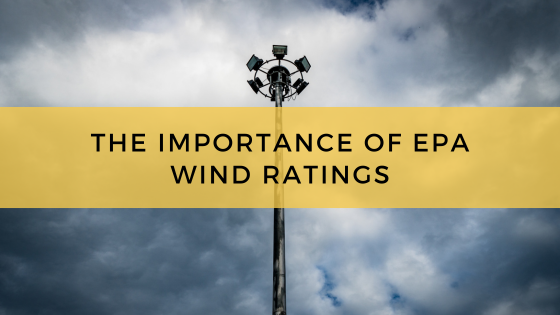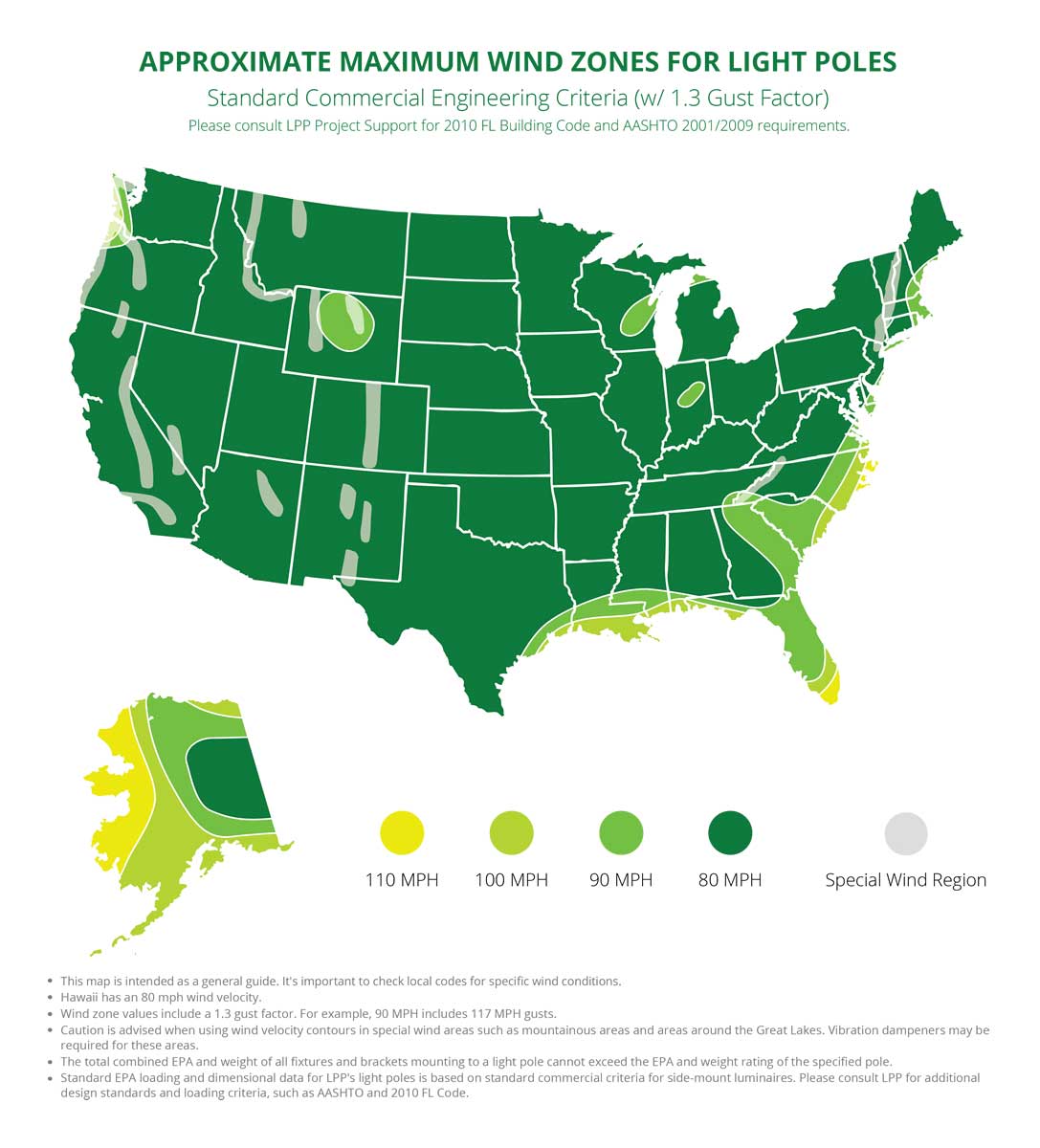 The EPA wind rating of a light fixture refers to the maximum wind speed the fixture can withstand before it is at risk of failure. This failure could be with the luminaire itself, or a failure with the fixture or the hardware connecting it to a light pole.
The EPA wind rating of a light fixture refers to the maximum wind speed the fixture can withstand before it is at risk of failure. This failure could be with the luminaire itself, or a failure with the fixture or the hardware connecting it to a light pole.
There is a lot to consider regarding wind, so when installing a new lighting system, the installation team must factor in each fixture’s EPA wind rating to ensure it will not pose a risk to people during stormy weather.
How are EPA Wind Ratings Determined for Lighting Fixtures?
Calculating a fixture’s EPA wind rating requires complex math and a lot of data. EPA is an acronym for effective projected area (EPA), referring to the fixture’s total surface area when you add up the surface area of all wind-exposed faces.
Here is an example: Imagine a fixture that is pyramid shaped. If you view the fixture from the side, it looks like a triangle. If you view the fixture from below, you will see the base of the pyramid is square. Both faces will have different surface areas individually, but because they are both exposed to the wind, they are both factored into a fixture’s EPA wind rating. It is like the old shape folding questions from your high school tests – how much total surface area does a 3D object have once you calculate that surface area for every face? Of course, lighting fixtures can be extremely complex geometrically, so the math may involve hundreds of individual faces.
That is the EPA part of the equation, but there are other factors that influence a fixture’s wind rating. The fixture’s drag coefficient is used with its EPA to determine wind ratings. A fixture’s drag coefficient is unique to the fixture and is partly dependent on its shape and material composition, as material density has a big impact on how that material responds to wind pressures.
Drag coefficients are derived from real-world operational data that may take years to completely refine. This is because they are based on complex fluid dynamics that change from one second to the next with prevailing wind conditions.
Fortunately, it is not necessary for property owners to understand the math behind EPA wind ratings. All property owners need to know is what a fixture’s EPA wind rating means and how it will guide a lighting project.
What Does a Lighting Fixture’s EPA Wind Rating Mean?

Lighting installers consider a fixture’s EPA wind rating when selecting fixtures for exposed exterior applications like parking lot and stadium lighting applications.
Every part of the U.S. is part of one of several “wind regions,” ranging from 70 mph to 150 mph (or more, in a few isolated areas). These are expected maximum wind speed values, save extreme circumstances like a hurricane or tornado.
Each fixture’s EPA wind rating must be greater than the max wind speed in their wind region to be considered a safe installation option. Lighting installers ensure that the fixtures they use meet this specification, along with any hardware or other additions to the fixture that may influence its EPA wind rating.
When Do Lighting Installers Consider EPA Wind Ratings?
EPA wind ratings are obviously only important for exterior lighting applications where wind exposure is expected. Some common examples include:
- Parking lot lighting systems
- Stadium lighting systems
- Park and public space lighting systems
- Street lighting systems
- Security lighting systems
Why Professional Lighting Installers Should Handle Your Exterior Lighting Project
If your new lights will be tested by intense wind pressures, it is important that an expert lighting crew select, position and install those fixtures. Here is what the professionals bring to the project:
- An expanded selection of compatible fixtures – The lighting experts are accustomed to installing lights in outdoor settings where intense winds are expected. This experience means your lighting partner will know which fixtures to select for your project.
- Smart installation practices to minimize wind impacts – Ultimately, the fixture’s EPA wind rating will determine whether it is appropriate for a particular job, experienced lighting companies can optimize a fixture’s wind resistance by pairing it with the right lighting poles and hardware. In short, the lighting experts can maximize your lighting’s wind safety.
- Superior lighting results – The lighting experts will provide the best possible look, performance and efficiency, given the parameters of your project – including wind concerns. Lighting professionals use specialized in photometric design software to optimally select and arrange a new set of lights, so property owners end up with a wind-safe lighting system that will not compromise on performance or durability.
Lighting Experts Understand the Importance of EPA Wind Ratings and How to Apply Them
Exterior lighting fixtures are potential safety risks if they are not properly installed and secured which is why it is important to work with a reputable lighting expert who understands EPA wind ratings and the various zones in the U.S.
When property owners work with a reputable lighting company they can rest assured that their lighting team will pay attention to those EPA wind ratings and ensure all wind-related hazards are accounted for when setting up a lighting system.






